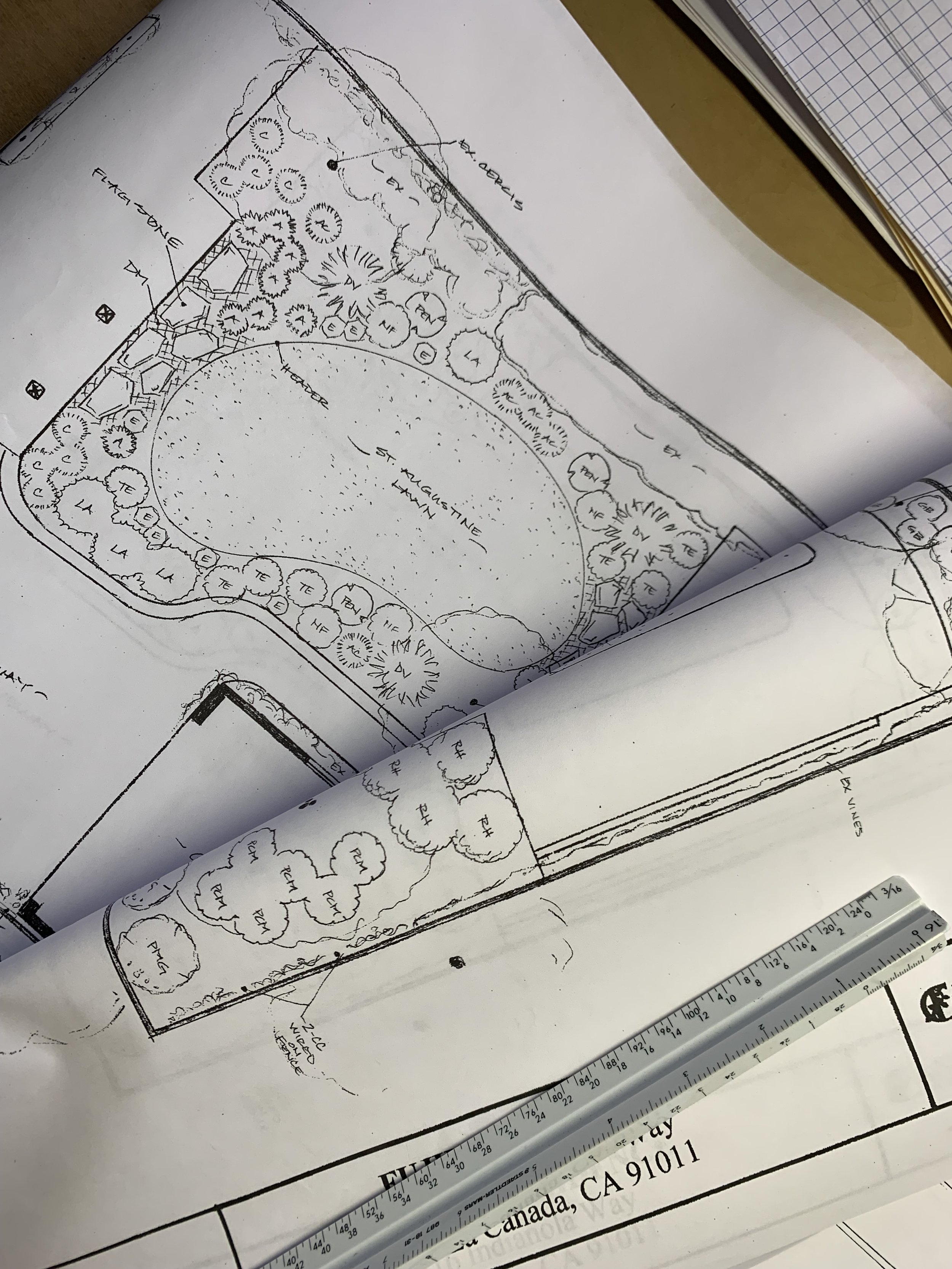THE DESIGN PROCESS
We recognize that landscape design preferences are very subjective and the client’s input is considered when doing the design. The design process starts with an on-site interview with the client. The overall goals for the landscape are reviewed as well as the intended uses of the landscape. We work backwards from how the landscape will be used.
Using a Design Look Book of past jobs, we determine the aesthetic preferences of the client. The style of landscape, plant likes and dislikes, colors, textures, and foliage types are explored. One of the first steps to go over is what plants or features in the existing landscape the client wants to retain. The location of significant trees is also noted.
Some of the questions we ask:
Is the space going to be used frequently for large gatherings or is it primarily used for small groups of people?
Will the space be used by children and / or pets? Are privacy and screening needed?
Are there any issues with allergies or fragrance?
Photographs and measurements of the site are then taken and a design is developed using the information gleaned from the interview. All of Canterbury Landscaping’s designs are hand drawn versus CAD (Computer-Aided Design). An overhead view “concept” drawing showing details of plant placement and other landscape elements is given to the client. A plant list with the botanical and common name of each plant, accompanied by photographs of the plants being used is included. Mechanical drawings are not provided.
BUILDING BLOCKS OF THE DESIGN
Choosing the Right Plants
We select the appropriate plants for the client’s needs and our climate. Low maintenance and low water are frequently requested and this is taken into consideration when plants are selected.
Water conservation is becoming increasingly important and plant selection is a key element in achieving lower water usage. Often higher maintenance, higher water use plants are used in selected prominent areas of the yard and the rest of the landscape is designed to need less maintenance and less water.
A low water or drought tolerant landscape does not mean cactus! There are many lush and colorful plants that do not require much water. Prime examples are lavenders, sages, penstemon and native verbena. California native plants and those native to other Mediterranean climates are adapted to our short rainy winters and long dry warm season. Natives are also beneficial to our wildlife. Birds and butterflies are the most requested visitors to our gardens.
Permeable Hardscape / Boulders / Rocks
Decomposed granite (DG), flagstone, broken concrete and gravel can be used to allow water to percolate into the soil rather than run off into the street.These are often used for pathways and seating areas.
Gravel is also a good burglar deterrent when used in utility areas next to the house. Boulders can add a dramatic touch to the landscape. Boulders with a flat top can double as “sitting rocks”.
Dry streambeds are an interesting element that can be incorporated into the design. These often double as pathways. A natural look is achieved by using boulders and rocks along the perimeter with gravel and cobble in the interior.
Patios / Driveways / Outdoor Living Spaces
The layout of hardscape areas such as patios, driveways, walkways, fencing and pools is included in the design. The footprint of the area is shown and materials for the project are specified when appropriate. NOTE: no mechanical drawings of hardscape are provided.
Lighting
Properly designed lighting adds an entirely new dimension to the landscape. The existing lighting (streetlights, security lights, post lights etc.) are taken into account and the client is consulted on what lighting effect they want to achieve.
Generally major trees are spotlighted. Path lights are installed to illuminate walkways and sometimes at intervals in the front of bed areas to carry the lighting scheme through the yard. Wash lights are used for a diffuse, broad illumination of walls and fences. Hanging fixtures and down lights are used in arbors and trees to aid in navigating at night or to create a “moonlight” effect.






